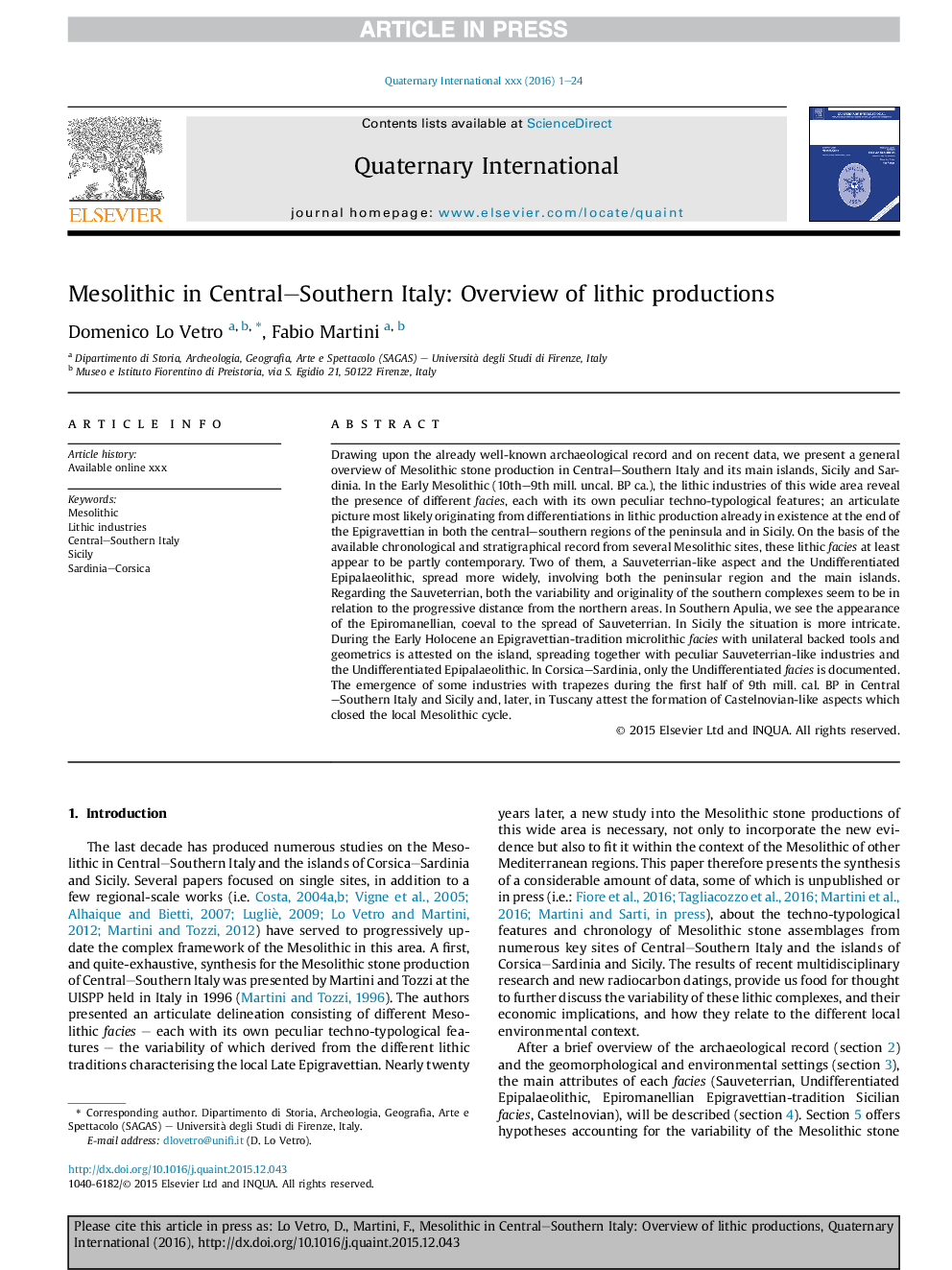| Article ID | Journal | Published Year | Pages | File Type |
|---|---|---|---|---|
| 5113898 | Quaternary International | 2016 | 24 Pages |
Abstract
Drawing upon the already well-known archaeological record and on recent data, we present a general overview of Mesolithic stone production in Central-Southern Italy and its main islands, Sicily and Sardinia. In the Early Mesolithic (10th-9th mill. uncal. BP ca.), the lithic industries of this wide area reveal the presence of different facies, each with its own peculiar techno-typological features; an articulate picture most likely originating from differentiations in lithic production already in existence at the end of the Epigravettian in both the central-southern regions of the peninsula and in Sicily. On the basis of the available chronological and stratigraphical record from several Mesolithic sites, these lithic facies at least appear to be partly contemporary. Two of them, a Sauveterrian-like aspect and the Undifferentiated Epipalaeolithic, spread more widely, involving both the peninsular region and the main islands. Regarding the Sauveterrian, both the variability and originality of the southern complexes seem to be in relation to the progressive distance from the northern areas. In Southern Apulia, we see the appearance of the Epiromanellian, coeval to the spread of Sauveterrian. In Sicily the situation is more intricate. During the Early Holocene an Epigravettian-tradition microlithic facies with unilateral backed tools and geometrics is attested on the island, spreading together with peculiar Sauveterrian-like industries and the Undifferentiated Epipalaeolithic. In Corsica-Sardinia, only the Undifferentiated facies is documented. The emergence of some industries with trapezes during the first half of 9th mill. cal. BP in Central-Southern Italy and Sicily and, later, in Tuscany attest the formation of Castelnovian-like aspects which closed the local Mesolithic cycle.
Keywords
Related Topics
Physical Sciences and Engineering
Earth and Planetary Sciences
Geology
Authors
Domenico Lo Vetro, Fabio Martini,
